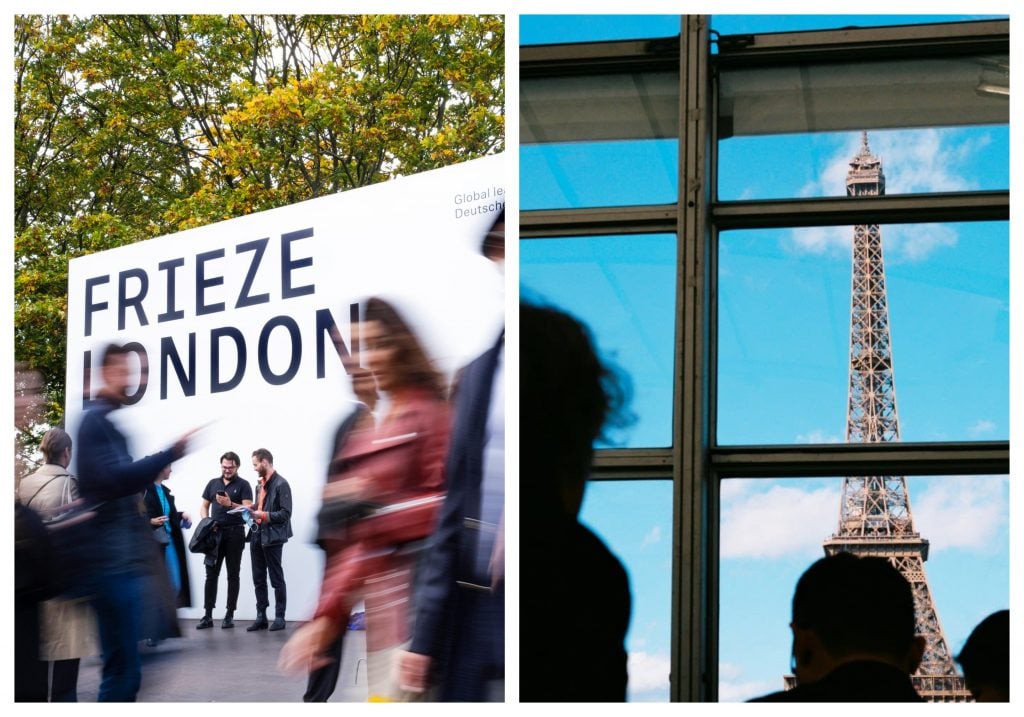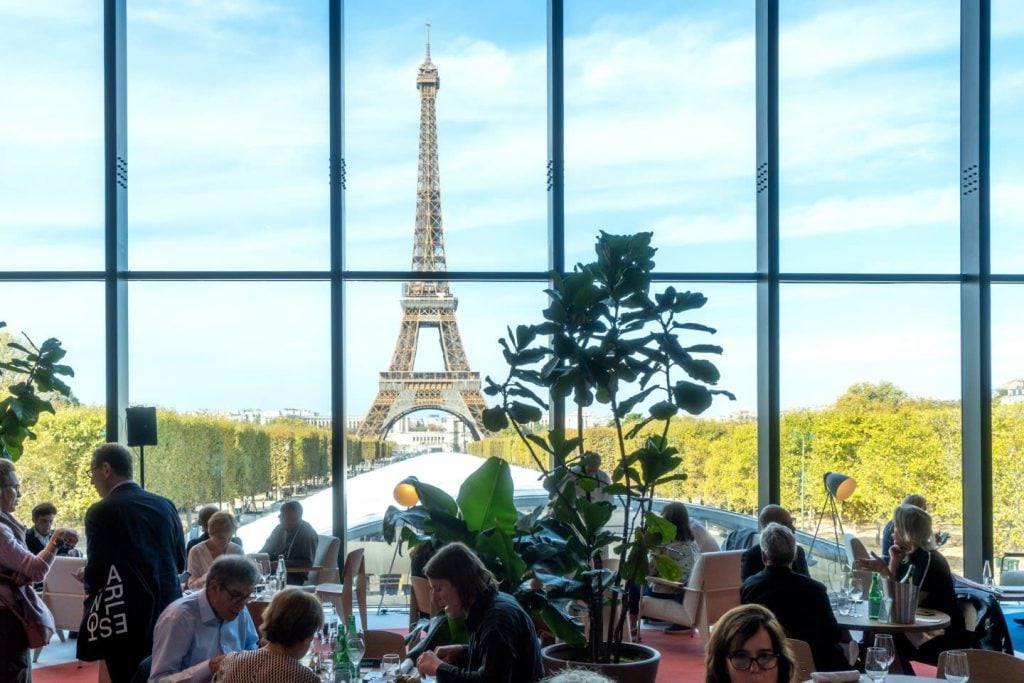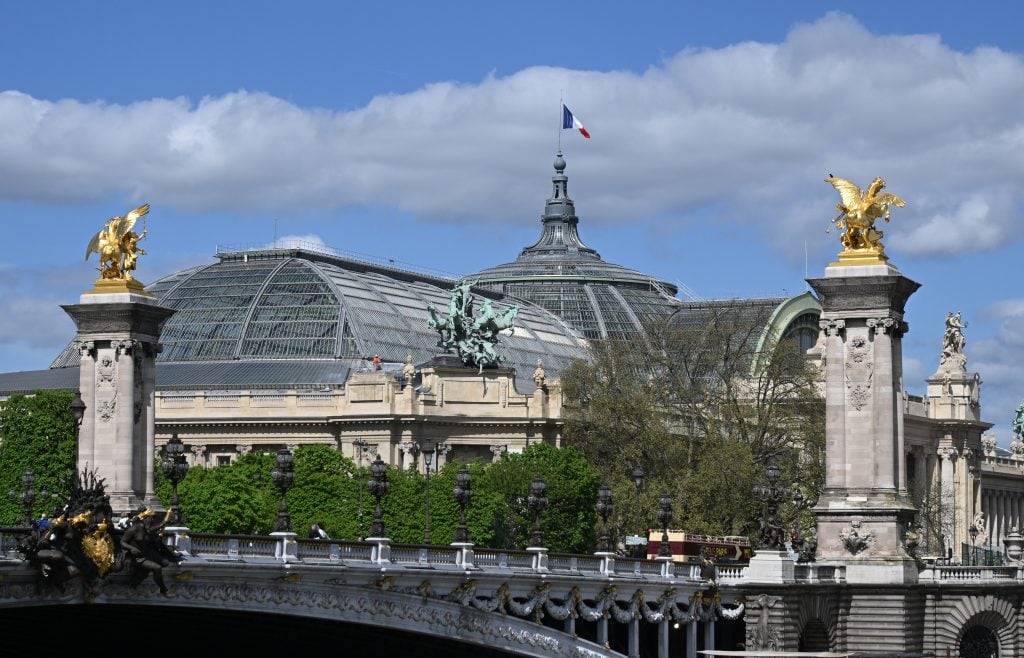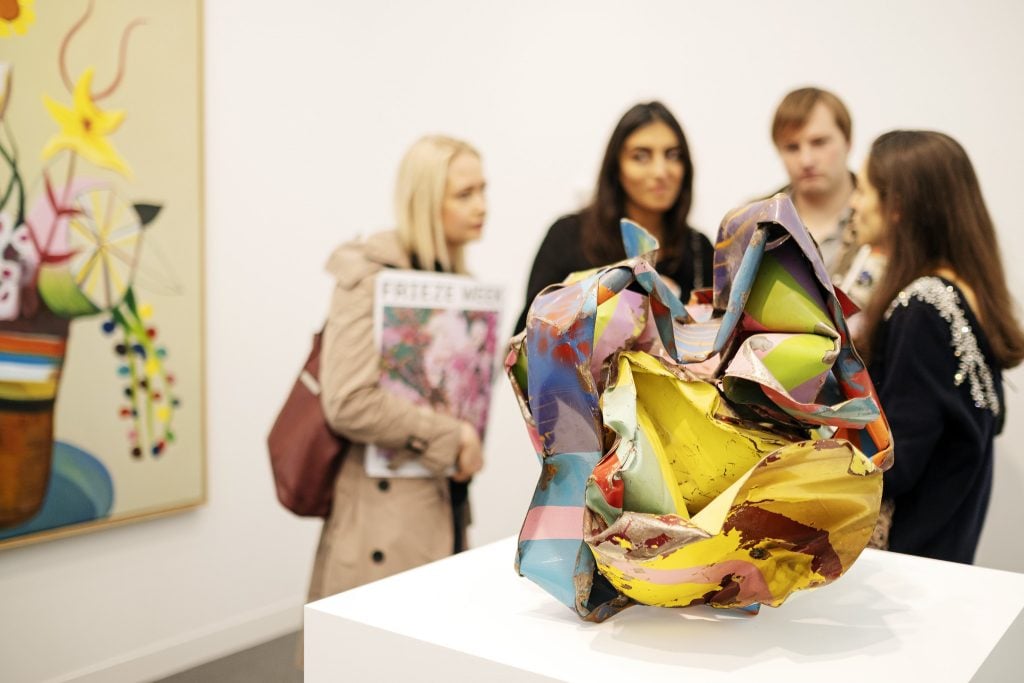Analysis
To Frieze or Not to Frieze: Are Collectors Prioritizing Paris Over London?
An expanded and rebranded Art Basel Paris may have VIPs rethinking their options this year.

An expanded and rebranded Art Basel Paris may have VIPs rethinking their options this year.

Margaret Carrigan

A version of this article originally appeared in The Back Room, our lively recap funneling only the week’s must-know art industry intel into a nimble read you’ll actually enjoy. Artnet News Pro members get exclusive access—subscribe now to receive the newsletter in your inbox every Friday.
Champagne cases are being stacked, gallery shows are being mounted, and tents are up in Regent’s Park. That’s right: Frieze Week is upon us.
You’d be forgiven for feeling like the term “week” is being used loosely this year. For those already in London, a plethora of events are underway in advance of Frieze London and Frieze Masters, which open to VIPs on Wednesday. In fact, the whole first half of October is really just one long fair week since the rebranded Art Basel Paris (née Paris+) falls just days after Frieze closes.

White Cube’s booth at Frieze London in 2023. Photo courtesy of Linda Nylind/Frieze
In theory, the doubleheader means that international collectors don’t need to double down on one fair or the other due to a large, awkward amount of time between them. (As has happened in some years.) But in practice, does that mean VIPs are splitting their time equally?
London-based art advisor Arianne Piper told me there’s “definitely something” drawing collectors to Paris this year, especially with its “post-Olympic glow” and the glamor of Art Basel Paris being held with more exhibitors than ever at the Grand Palais, which has been closed for the past three years.

Paris+ par Art Basel. Courtesy of Paris+ par Art Basel.
“I feel people are particularly time poor and therefore a lot of international collectors may prefer to visit Paris this year,” Piper said. While both cities offer glitz and great museums, the French capital is “smaller and, for many people, easier to navigate,” she said.
There are other factors that could give Art Basel Paris an advantage over Frieze this year: The British pound is slightly stronger against the U.S. dollar than it has been in recent years—the dollar is currently trading at $1.32 against the pound, versus $1.22 this time last year and $1.10 in 2022. (Meanwhile, the euro exchange rate is currently $1.10.) For any collectors coming from Asia, the yen and won also remain weak.

The Grand Palais and Pont Alexandre III in April. Photo: Stuart Franklin/Getty Images.
Burdensome bureaucracy also continues to hamper business in the U.K., and that includes the art trade. An import VAT suspension scheme introduced after Brexit is an administrative “nightmare” for galleries, according to Martin Wilson, the chairman of the British Art Market Federation. Meanwhile, some firms and wealthy individuals are considering leaving the U.K. over concerns that the new Labour government is planning to increase taxes this month.
With the recent boom in Paris’s contemporary gallery scene and now the hard launch of Art Basel Paris, a shadow has been cast over London by the City of Light. But as Frieze London’s director, Eva Langret, told me, the British capital still offers a “more global stage” than its French neighbor. “It’s a city where young artists, curators, and writers converge from all over the world to discover themselves, find their communities, and write their stories,” she said.

Hauser and Wirth’s stand at Frieze London in 2021. Photo by Linda Nylind. Courtesy of Linda Nylind/Frieze.
The U.K. is still the leader in Europe’s art market by a wide margin, compared to France, but it’s becoming less of a priority port of call for those in the trade. Note that, this year, Frieze has added more VIP programming to its closing weekend, to accommodate visitors who visit later in the fair’s run, en route to Paris—i.e. after the VIP opening on Wednesday. How this plays out for sales remains to be seen.